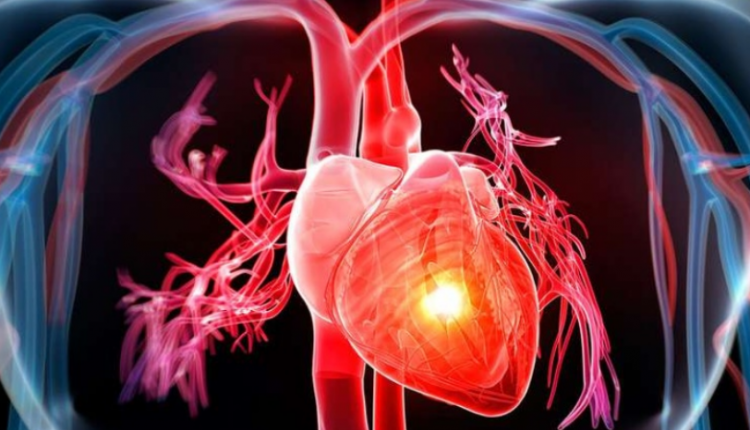
Heart murmurs: what it is and when to be concerned
Heart murmurs: a widespread condition that can be a physiological ‘noise’ or a warning sign of a heart condition
Heart murmurs is a term often coined to describe the noise that blood makes as it passes between the heart’s various structures, chambers and valves, driven by the contraction of the muscle.
While the passage of blood is normally quiet, it can sometimes become louder.
Heart murmurs, however, is not always an expression of pathology; in fact, in most cases it is a benign condition.
Heart murmurs: a physiological noise
A heart murmur is nothing more than the noise you hear when you listen to your heart: it is a physiological noise, because the blood may create turbulence as it passes through the heart structures.
In some people, especially young people or thin women, it can be felt with greater intensity, which can also occur in the case of fever, tachycardia and anaemia.
Having a heart murmur, therefore, does not mean you have a heart condition, it is not a pathology.
It is an alarm bell: in 80% of cases it is benign, a harmonic noise of no concern, while in the remaining 20% of cases it is an expression of cardiac pathology, such as valvulopathy.
The causes of heart murmurs
When it is discovered that the murmur is the expression of a cardiac pathology, it is necessary to carry out investigations to discover the origin. Various pathologies may be involved:
- congenital heart disease, i.e. malformations of the heart that have been present since birth (such as inter-atrial defects, inter-ventricular defects, patent ductus botallo);
- acquired heart disease, in adults, such as mitral valve prolapse or, particularly in the elderly, aortic valve stenosis. In this case, the perceived noise is very characteristic and recognisable, a rough murmur that occurs when blood has to pass through a partially closed or calcified valve;
- heart failure, a condition of left ventricular disease that can lead to mitral or tricuspid valve insufficiency.
Diagnosis of heart murmurs
Each valve produces a specific murmur; in the past, heart murmurs were studied very carefully from the point of view of semeiotics, leading to a diagnosis by auscultation of the heart.
From the murmur perceived, the type of valvulopathy from which the patient was suffering and the degree of severity could be understood.
Today, this method has been superseded by the diagnostic tool that provides the best understanding of the heart disease from which the murmur is generated: echocardiography.
Compared to previous years, the ability to listen to murmurs has been somewhat lost among doctors: in the past, a medical student would study murmurs on audio cassettes, thus training himself to recognise them.
Today, medical instruments have evolved and the origin of the murmurs is diagnosed through ultrasound examination, where it is possible to see immediately the movement of the valve and the contraction/dilation of the ventricle.
This examination uses ultrasound, so it is not dangerous and is not a source of radiation.
There are various types:
- Transthoracic echocardiography: the simplest examination, in two dimensions;
- 3D echocardiography;
- Transesophageal echocardiography, the most in-depth examination to better visualise the movement of the valves’.
The symptoms
Symptoms are present if the heart murmur is the expression of a pathology.
It may happen that patients who have been asymptomatic up to now suddenly become short of breath and experience a major murmur that was not present before.
This may occur in the case of a ruptured mitral valve chord.
In the case of patients suffering from aortic stenosis, on the other hand, it is typical for there to be no symptoms until, usually from the age of 70-80, a murmur occurs, which is an expression of a calcified valve that is closing.
In this case, it is important to make a diagnosis before severe clinical events, such as heart failure or stroke, occur.
ECG EQUIPMENT? VISIT THE ZOLL STAND AT EMERGENCY EXPO
Heart murmurs in children
In the case of children or adolescents, the first diagnosis of a heart murmur may be made directly by the general practitioner, or during sports visits.
Pathological heart murmurs, resulting from congenital heart disease, are diagnosed and, if necessary, treated a few months/years after birth.
The choice of therapy
As well as allowing an accurate diagnosis, identifying the valve disease and its degree of severity, echocardiography helps to choose the most suitable therapy for the patient, whether surgical or pharmacological.
Nowadays, however, thanks to advances in interventional cardiology, there is another therapeutic option: replacing a diseased aortic valve via non-invasive percutaneous TAVI, or repairing the mitral and tricuspid valves with a clip.
However, it is essential to monitor the progress of the murmurs over time, which may change depending on the evolution of the valve pathology.
Read Also:
Paediatrics, At The Bambino Gesù The First Heart Transplant With Covid+ Donor And Negative Recipient
Cardiac Amyloidosis, New Treatment Possibilities: A Book By Sant’Anna Di Pisa Explains Them
Secondary Cardiovascular Prevention: Aspirin Cardio Is The First Lifesaver


